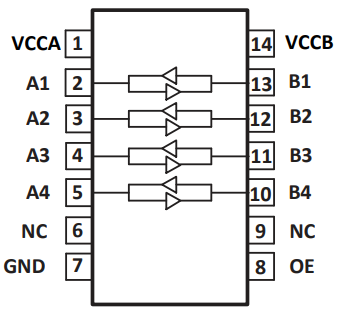Other Parts Discussed in Thread: TXU0304-Q1
Hi,
When using TXB0104QPWRQ1, we found that after the VCCB power supply is turned off, the MCU pin at B1 pulls up the 3.3v level, and the voltage at VCCB can be measured to 3.1v, and the level conversion chip can work normally. Our customer would like to ask what is the circuit between B1 and VCCB, and why there is current backdown?


